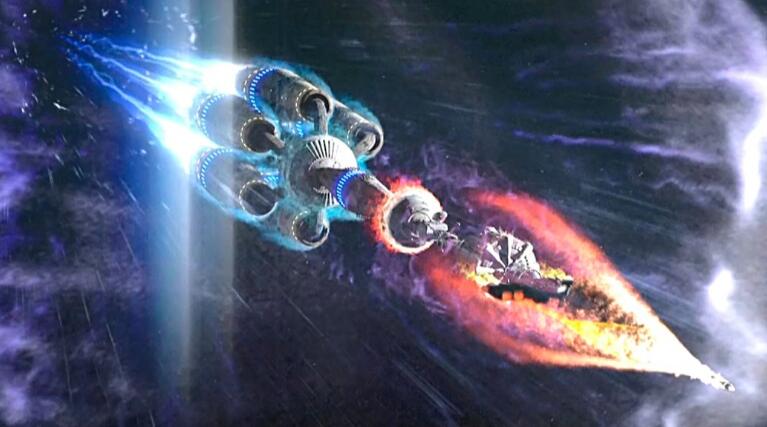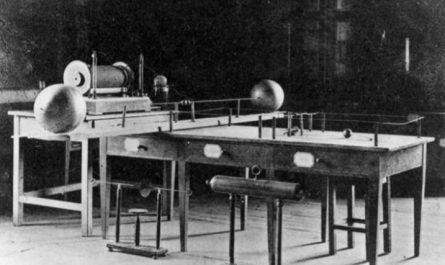Although the level of human science and technology is limited, we can conduct thought experiments that cannot be achieved in reality based on our imagination. Many physicists including Newton, Einstein, and Schrödinger have proposed famous thought experiments, such as Newton’s cannon, Einstein’s light-following thought experiment, and Schrödinger’s cat.
Einstein once imagined at the age of 16, what would he see if he caught up with a beam of light? This thought experiment laid the foundation for his later creation of the special theory of relativity. The topic discussed in this article is derived from Einstein’s special theory of relativity. If a person flies into the universe at the speed of light and returns to the earth one day later, can he still see his family? How long has the time on earth passed?
If you start from life experience, the answer to this question seems to be very simple. If you fly back in the universe one day, of course it is the past one day on Earth. But in fact, we are blinded by the so-called common sense. The theory of relativity tells us that things are not that simple.
According to the theory of relativity, time does not flow at the same rate everywhere in the universe, and there is no absolute standard clock in the universe. If you compare the time of two frames of reference with different speeds, you will find that time passes faster or slower, and time slows down in the faster frame of reference.
For example, the time on the high-speed train traveling is slower than on the ground. How slow the time is depends on the speed v of the high-speed rail.
Since the speed of light is nearly 300,000 kilometers per second, this speed is much higher than that of high-speed rail, making the time expansion effect so small that it can be ignored. Assuming that the speed of the high-speed rail is 300 km/h, when a person rides the high-speed rail for a day, the time he experiences is about 3.3 nanoseconds slower than that of the person on the ground, which is 3.3 parts per billion.
However, when the speed is close to the speed of light, v/c will be close to 1, which makes the time expansion effect very obvious. In addition, it should be noted that the above formula also means that the speed of the object cannot reach the speed of light, otherwise the denominator will lose its meaning. Although the speed of the object cannot reach the speed of light, we can discuss what happens when the speed is close to the speed of light.
Since the theory of relativity denies the concept of absolute time, when talking about time, it is necessary to clarify which frame of reference time corresponds to. Assuming that this one-day time is the time of the spacecraft reference frame, when a person flies in a spacecraft with a speed of 99% of the speed of light for one day and then returns, then the time on the earth will pass by 7 days at this time. For people on Earth, the spacecraft left a week ago, but the people on the spacecraft think that the departure time is yesterday.
If the spacecraft flies at 99.94443% the speed of light for one day, one month will pass on the earth. If the spacecraft flies at the speed of light of 99.9996245% for one day, one year will pass on the earth. After one day has passed, the people on the spacecraft have already grown one year old. As the speed of the spacecraft gets closer and closer to the speed of light, the difference in the lapse rate of time will rapidly increase. The time of the spacecraft after 1 day can be equivalent to 100 years on the earth, or 10,000 years, or even longer.
Therefore, after a person in a spacecraft returns to the earth, whether he can see his family again depends entirely on the speed of the spacecraft. If the speed of the spacecraft is fast enough, the earth is already in vicissitudes of life. In fact, through this method, the spacecraft can fly to the future of the earth.
It is worth noting that no matter how fast the spacecraft flies, the people on the spacecraft will not feel that their time is slowing down. One day is one day. But if someone on Earth observes the spacecraft through an astronomical telescope, he will find that the people on the spacecraft move very slowly. The difference between the speed of time can only be known after comparison, and I cannot directly feel whether time has become faster or slower.
There is another problem here. It is said that the movement is relative. The fast movement of the spacecraft relative to the earth can also be regarded as the fast movement of the earth relative to the spacecraft. Then, does this mean that the time on the earth is slowing down?
actually not. The spacecraft needs to undergo acceleration and deceleration from leaving the earth to returning to the earth. This kind of movement that can truly feel the acceleration is absolute, so it is the spacecraft that slows down time, not the earth.
In daily life, the two speeds will change after being superimposed and synthesized. But the theory of relativity shows that the speed of light is an exception. If a beam of light is emitted on the moon, whether it is an observer on a spacecraft or an observer on the earth, they will measure the speed of this beam of light to be the same speed of light.
Einstein believed that since the speed of light is constant, it will lead to changes in other physical quantities that were originally considered absolute, and this is time (and there is space). Whether it is the constant speed of light or the expansion of time, these phenomena have been confirmed by experiments.
Artificial satellites move fast in space, where the time lapse rate is not consistent with that on the ground. If we want to use artificial satellites for precise navigation and positioning, we need to eliminate the time dilation effect of the theory of relativity and keep the sky and earth time in complete synchronization. This is exactly what we have to experience every day.






